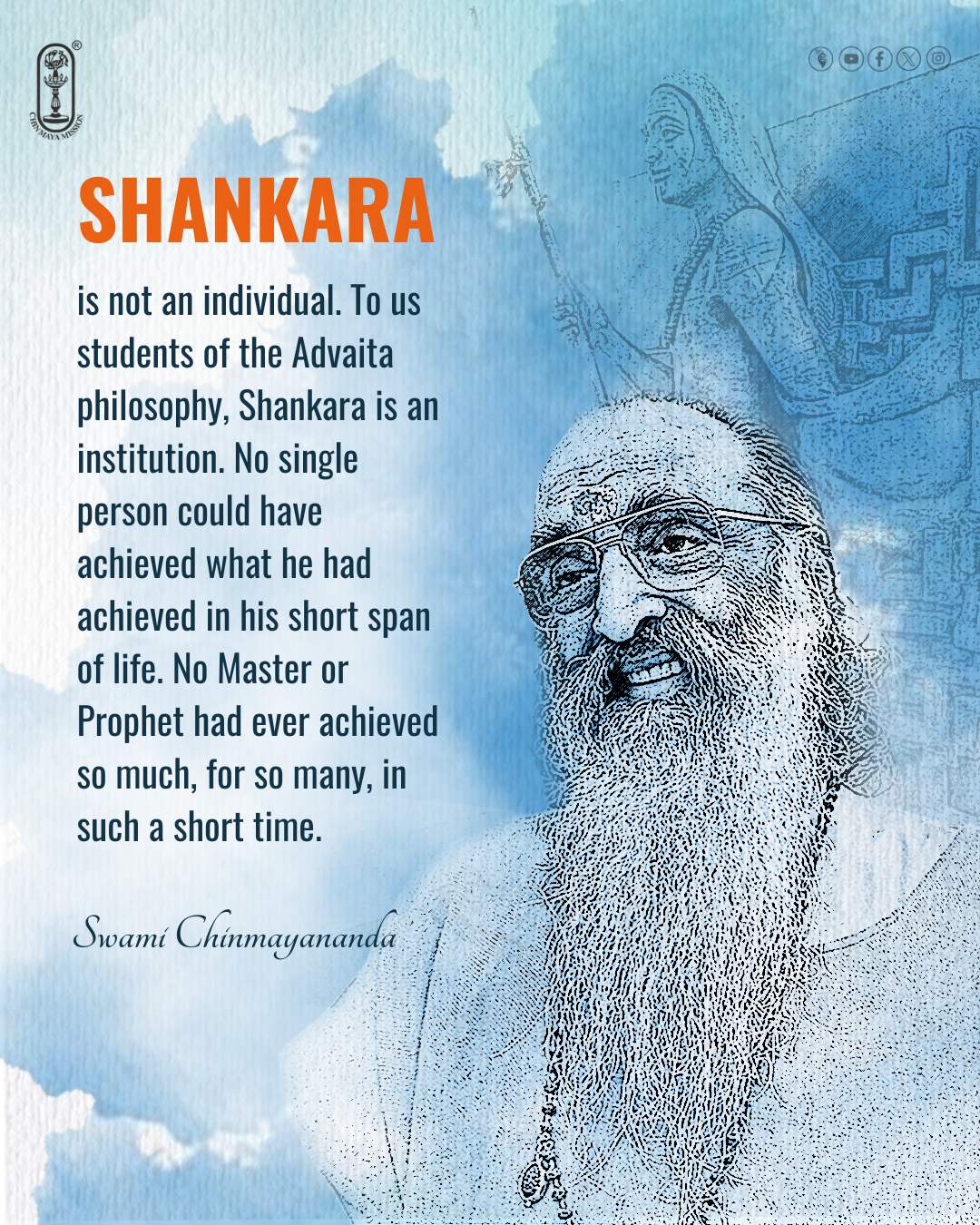Adi Shankaracharya – The Greatest Teacher or Guru of Advaita Vedanta
Adi Shankaracharya, or Adi Shankara, or the first Shankara, was a great Vedic guru, philosopher, and teacher. Adi Shankaracharya was an ocean of wisdom and possessed vast knowledge from a very early age. Throughout his journey, Adi Shankara integrated the concepts of older “Advaita Vedanta” and taught the fundamental purpose of Upanishads.
Adi Shankaracharya was from a poor Brahmin family from Kaladi (currently Kerala, India). His father was Sivaguru, and his mother was Aryamba. Both of his parents were great devotees of Lord Shiva. every day they prayed to the Lord for a child, which was later fulfilled.
It is believed that one day, Lord Shiva came into Aryamba’s dream and told her that he would appear in this world as her child. Thus, Adi Shankaracharya is often cited as the avatar of Mahadev himself. At an early age, Shankara lost his father. So, it was his mother Aryamba, who brought him up and educated him. From an early age, Shankara was found to be an exceptionally brilliant child. At age two, he could fluently speak and write in Sanskrit. He studied all four Vedas and could recite them effortlessly by age four. When he turned twelve, he left his home and started living an ascetic life. While searching for a guru, Adi Shankara met his acharya Govinda Bhagavatpada. Under his guidance, Shankara read and studied numerous ancient texts such as Vedas, Brahmasutras, Upanishads, etc.
One of Adi Shankaracharya’s most remarkable works is his commentaries of Brahma Sutras ( an ancient text by Sage Vyasa). Brahma Sutra Bhasya is the oldest surviving commentary on Brahma Sutras. Moreover, he had also commented on ten Upanishads such as Brihadaranyaka, the Chandogya, the Aitareya, the Taittiriya, the Kena, Isha Upanishad, the Katha Upanishad, the Mundaka, the Prashna, and the Mandukya.
Guru Adi Shankaracharya is the author of the ancient Sanskrit text, Upadesasahasri (the thousand teachings). It is an 8th-century text which consists of two parts – metric and prose. The metric or verse part includes nineteen chapters, whereas the prose part has three branches. The first part talks about the issues of Advaita Vedanta. In this verse, he states that pure consciousness, atman, and awareness are the true self, not a body and mind. Then, in the prose part, the sage explained ways to reach the final destination or liberation.
Writings
Besides commentaries on important texts, he wrote stotras for Sri Krishna (Vaishnanism) and Lord Shiva (Shaivism). He composed seventy-two hymns for gods and goddesses. He also wrote twenty-three texts to spread his teachings of non-dualism or Advaita Vedanta. They are –
Bhasya
- Brahmasūtra
- Aitareya Upaniṣad (Rigveda)
- Bṛhadāraṇyaka Upaniṣad (Śukla Yajurveda)
- Īśa Upaniṣad (Śukla Yajurveda)
- Taittirīya Upaniṣad (Kṛṣṇa Yajurveda)
- Śvetāśvatara Upaniṣad (Kṛṣṇa Yajurveda)
- Kaṭha Upaniṣad (Kṛṣṇa Yajurveda)
- Kena Upaniṣad (samaveda)
- Chāndogya Upaniṣad (samaveda)
- Māṇḍūkya Upaniṣad[note 1] (Atharvaveda) and Gauḍapāda Kārika Muṇḍaka Upaniṣad (Atharvaveda)
- Praśna Upaniṣad (Atharvaveda)
- Bhagavadgīta (Mahabhārata)
- Vishnu Sahasranama (Mahabhārata)
- Sānatsujātiya (Mahabhārata)
- Gāyatri Mantraṃ
- Prakaraṇa grantha
Treatises
- Vivekacūḍāmaṇi (Crest-Jewel of Wisdom)
- Upadeśasāhasri (A thousand teachings)
- Śataśloki
- Daśaśloki
- Ekaśloki
- Pañcīkaraṇa
- Ātma bodha
- Aparokṣānubhūti
- Sādhana Pañcakaṃ
- Nirvāṇa Ṣaṭkam
- Manīśa Pañcakaṃ
- Yati Pañcakaṃ
- Vākyasudha
- Tattva bodha
- Vākya vṛtti
- Siddhānta Tattva Vindu
- Nirguṇa Mānasa Pūja
- Prasnottara Ratna Malika (The Gem-Garland of Questions and Answers)
- Prabodhasudhakara
- Svatma Prakasika
Stotra
- Ganesha Pancharatnam
- Annapurnashtakam
- Kalabhairavashtakam
- Dakshinamurthy Stotram
- Krishnashtakam
- Bhaja Govindaṃ, also known as Mohamuḍgara
- Śivānandalahari
- Saundaryalahari
- Śrī Lakṣmīnṛsiṃha Karāvalamba Stotraṃ
- Kanakadhāra Stotraṃ
- Bhavāni Aṣṭakaṃ
- Śiva Mānasa Pūja
- Pandurangashtakam
- Subramanya Bhujangam
- Kashi Panchakam
- Nirvana Shatakam
- Guru Paduka Stotram
Disciples
- Padmapada
- Totakacharya
- Hastamalakacharya
- Sureshvara
Four Peethams
- Sringeri – Among the four Peethams, Sringeri was the first institute. It resides near the banks of the Tunga river in Karnataka. Sureshvaracharya governed this monastery, which follows the principles of Yajur Veda.
- Dwarka – In the western city of Dwarka (state of Gujarat) lies the DwarkaPeetham. Hastamalakacharya was the headmaster of this monastery, whose formation basis was Sama Veda.
- Jyotirmatha – Built on the principle of Atharva Veda, this monastery located in the city of Joshimath, Chamoli district, Uttarakhand, India, and Totakacharya was the headmaster.
- Govardhanmatha – It lies in the eastern part of India in the city of Puri in the state of Odisha, whose governor was Padmapada. It was built on the principle of Rig Veda.
It is believed that Adi Shankaracharya lived for only 32 years. In that time, Adi Shankaracharya is known to have travelled all across Bharat twice. It is also said that the saint was last seen heading towards the Himalayas and spent the last moment of his life in a cave near Kedarnath.
Major source: Twitter thread from @Priyamvada227s


